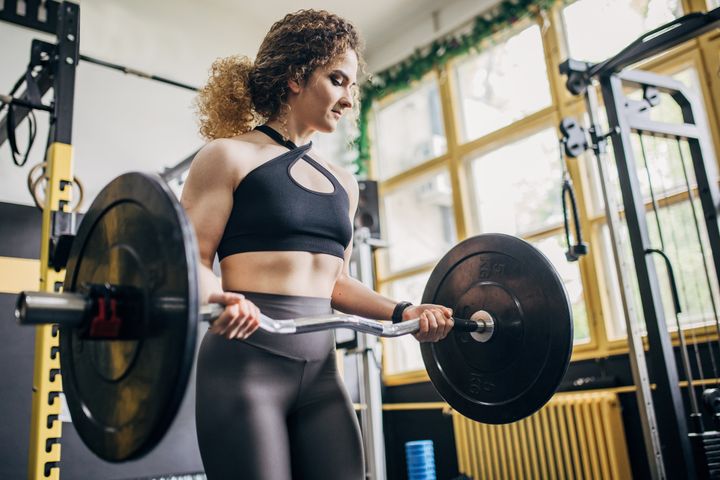
Despite NHS advice to incorporate strength training into your exercise routine if possible, some myths about lifting weights remain ― especially for women.
Olivia Tyler, National Fitness Assurance Lead at Nuffield Health, told HuffPost UK, “There are a wealth of misconceptions related to resistance training for women. This is actually one of the biggest barriers when it comes to women and resistance training and can impact both physical fitness and physical health.”
So, we thought we’d share some myths she debunked:
1) I will look bulky if I use weights
If only it were that simple, Tyler said.
“To grow significant amounts of muscle, you have to put in some serious work aside from regular resistance training,” she said. “There needs to be a lot of focus on increasing your calories to match the level of work you are doing, and it isn’t easy.“
She adds, “I go to the gym 4 times a week and use weights and I would not consider myself to be bulky or have large muscles at all. But we might also need to look at our own standards for beauty. Being strong is just as beautiful as all body types are.”
2) The weights area is just for men
Some might think that, but the UK Chief Medical Officers don’t agree, Tyler points out. “Strength training is for everyone,” she advises.
“You may see lots of men in that area but go and claim your space and change the ratios!”
3) Lifting will cause injuries or be painful
It sure does look sore to lift a heavy weight, and it can be a little tricky when you start, Tyler says. But it shouldn’t be painful ― she advises a one-off session with a personal trainer or help from a gym assistant if [possible when you’re just starting, as poor posture can damage your knees and other joints.
However, “if you start anything too intensely, you may experience some
initial muscle aches. This is because your muscles need to adapt to the new way of moving and the increased load they may be working through,” she says.
This “is why you should start slowly and gradually increase the intensity of your physical activity. When you experience some muscle aches post-workout, this is called DOMS or Delayed Onset of Muscle Soreness and often sets in 24-48 hours after.”
Muscle aches and sharp pain are different, she says; so while a tough workout might leave you sore, it shouldn’t be agonising. “If anything causes you intense pain, you should stop and seek medical advice,” she says.
4) Lifting is only for people who are experienced in the gym
I’ve been hung up on this before. But Tyler says, “When learning a new skill, everyone has to start somewhere. Even people who have been using the gym for years need advice on how to use a piece of kit they haven’t used
before, and I guarantee you that not everyone in that gym is feeling confident.”
She advises you to meet with a personal trainer (PT) or watch videos online to prep.
5) I have to have a really long workout session
In a word, no.
“The guidelines are that anything is always
better than nothing,” Tyler said. “Your workouts should be built into your week as part of your routine and so you can only fit in what you have time for.”
Strength training can seem tough to those with busy schedules as they require longer rest times than other workouts. “Some people like to split their weeks into different areas of their body, for example doing chest and tris on one day, back and bis on a separate day and legs on another,” she says ― this can make it easier.
And good news ― you don’t have to go every day. “If you are focusing on growing, strengthening or conditioning your legs for example, you may need to leave 2 days of rest before working on them again. When people train the same muscle groups over and over without any rest, this is when they can become injured,” Tyler points out.
6) I’m already active, so I don’t have to lift
As a cardio girl, I wish this was true. But while some exercise is better than none, you should ideally mix in some strength training to your routine regardless of how active you are.
For instance, runners “need to supplement their training with activities that will strengthen the muscles around their joints. This prevents injury, gives even more health benefits and increases your running performance,” she says.
Looks like I have no excuse to weight (sorry)...